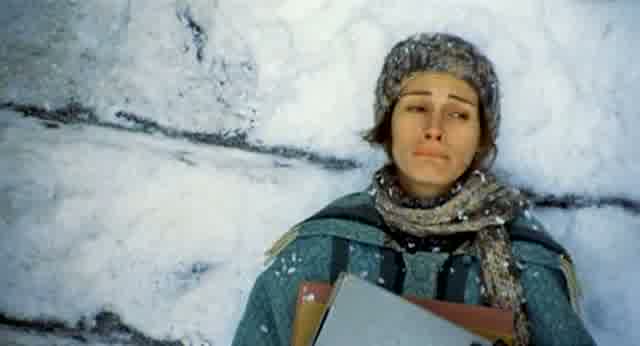Directed by:
Mike NewellCinematography:
Anastas N. MichosComposer:
Rachel PortmanCast:
Julia Roberts, Kirsten Dunst, Julia Stiles, Maggie Gyllenhaal, Juliet Stevenson, Dominic West, Ginnifer Goodwin, Topher Grace, John Slattery (more)VOD (5)
Plots(1)
In 1953, a time when women's roles were rigidly defined, free-spirited, novice art history professor Katherine Watson begins teaching at the prestigious all-female Wellesley College--which despite its academic reputation, is an environment where success is measured by 'how well' the students marry. Encouraging these women to strive for a more enlightened future, Watson challenges the administration and inspires her students to look beyond the image of what is, and consider the possibilities of what could be--contrary to popular belief. (official distributor synopsis)
(more)Reviews (3)
In the films The Hairy Bird and Dick, we have experienced the joys and sorrows of teenage life in the 1960s and 1970s together with Kirsten Dunst, and now we return to the 1950s in an arc and, thanks to Kirsten, once again experience the many paradoxes of a particular era. Where was the democratic progressive society of the USA a few years before World War II? In prehistoric times, folks.
()
An old-fashioned film with charming actors. Everything is color-coordinated and it gives off an almost calming impression. Julia Roberts and Kirsten Dunst deliver their very high-quality performances, and the script is not bad either. Thematically appealing, but overall it feels a bit tedious.
()
On one hand, yes, it is quite an interesting portrayal of the period with believable characters, but on the other hand, it's a story that feels incredibly contrived. The happy ending at the end seems almost forced, and suddenly you're supposed to like a character you've disliked the whole time. You realize that all of a sudden, they all become caricatures who don't say anything, they just play for the sake of the story. Yes, it works overall, but that's normal for similar films. It's a pity that the film doesn't bring anything extra, like the film "Black and White World" did, which it actually has quite a lot in common with "The Smile of Mona Lisa".
()

